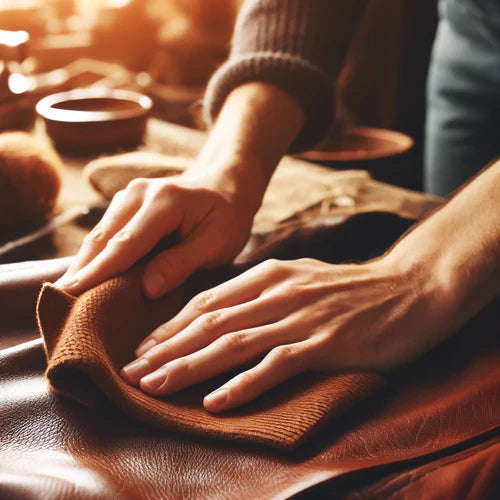
The History of Leather Conditioner
Share
The history of leather conditioner is closely tied to the broader history of leatherworking and the evolution of techniques used to preserve and maintain leather. Leather conditioners have been developed over millennia to keep leather soft, pliable, and durable. Here's a detailed look at the history of leather conditioner:
Ancient Times
- Natural Oils and Fats: The earliest forms of leather conditioning involved the use of natural oils and fats. Ancient civilizations, such as the Egyptians and Mesopotamians, used animal fats, fish oils, and plant oils to condition leather. These substances helped to keep the leather supple and prevent it from drying out and cracking.
Middle Ages
- Advanced Techniques: During the Middle Ages, leather conditioning techniques became more advanced. Tanners began using more sophisticated mixtures, including beeswax, lanolin, and tallow, to treat leather. These substances provided better protection against moisture and improved the longevity of leather goods.
- Use of Animal Brains: Some Native American tribes and other cultures used animal brains to condition leather. The brain's natural oils and fats made it an effective conditioning agent. This process, known as brain tanning, resulted in very soft and pliable leather.
Renaissance and Early Modern Period
- Vegetable Oils: The use of vegetable oils, such as olive oil and linseed oil, became more common during the Renaissance. These oils were used to condition leather, making it more flexible and water-resistant.
- Mixtures and Recipes: Leatherworkers began developing specific mixtures and recipes for leather conditioning. These often included combinations of oils, waxes, and other substances tailored to different types of leather and specific applications.
Industrial Revolution
- Commercial Products: The Industrial Revolution brought about the mass production of leather goods and, consequently, the development of commercial leather conditioners. These products were designed to meet the needs of a growing market and included a variety of ingredients to enhance leather's durability and appearance.
- Chemical Additives: With advancements in chemistry, new conditioning agents, such as petroleum-based products and synthetic waxes, were introduced. These provided more consistent results and were often easier to apply.
20th Century to Present
- Modern Leather Conditioners: In the 20th century, the range of leather conditioning products expanded significantly. Modern leather conditioners often contain a blend of natural and synthetic ingredients, including silicone, lanolin, beeswax, and various oils.
Cultural Significance
Leather conditioning has always been essential to maintaining the quality and longevity of leather goods. From ancient times to the present day, the history of leather conditioning shows us that various cultures have developed and refined techniques to preserve this valuable material. Whether for clothing, footwear, armor, or luxury goods, the art and science of leather conditioning continue to play a crucial role in leatherworking and care.
